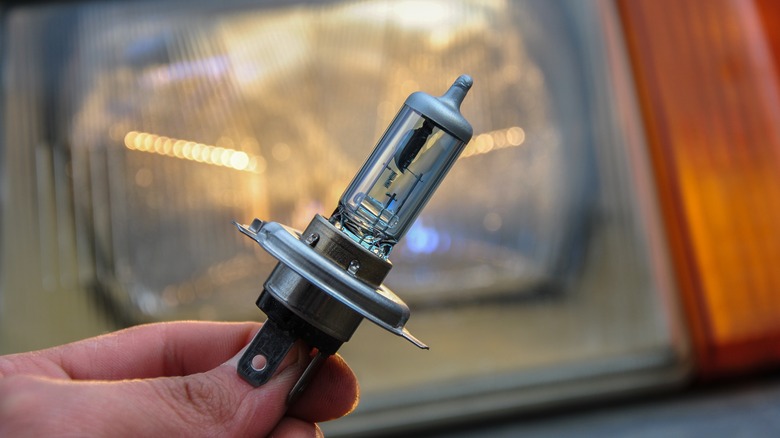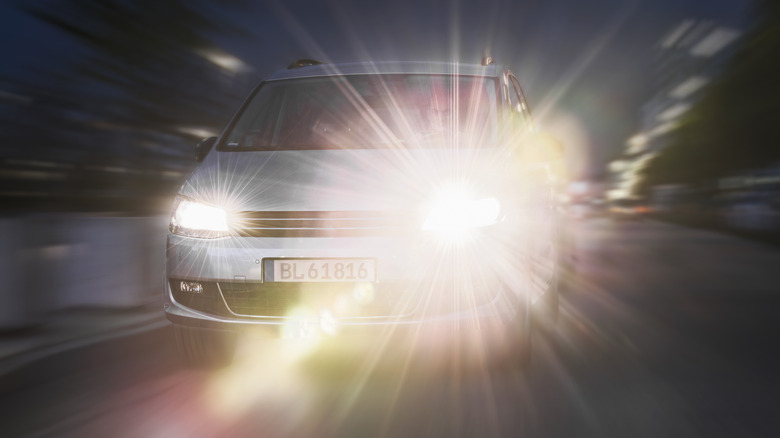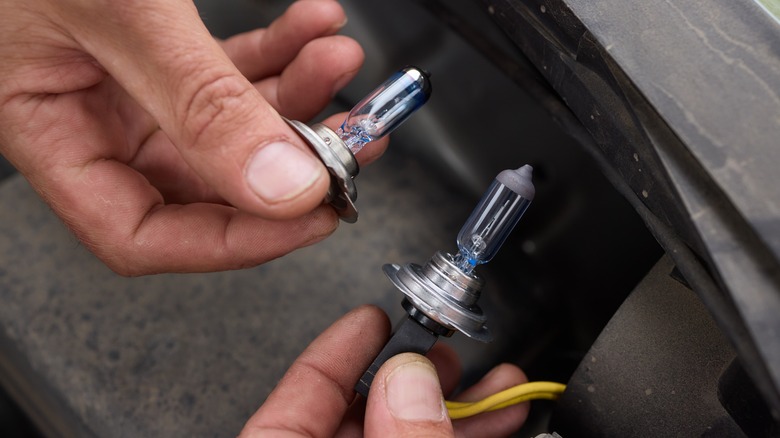
Tokariev Dmytro/Shutterstock
The answer to how long car headlights last depends on the bulb or lighting-system type. Conventional halogen bulbs are good for 500 to 1,000 hours. It may seem enough, but halogen bulbs will degrade faster with frequent night driving. That’s why headlights are the first upgrade for any of my new or used cars.
Advertisement
I’ve witnessed headlights transition from sealed-type units to halogen, HID, and LED, back when car headlights had lenses that don’t turn yellow or degrade with age like modern plastic headlights. I prefer upgrading to HID bulbs from halogens for better nighttime performance. Vehicles equipped with HID, or High-Intensity Discharge, headlamps emit a brighter, whiter light that could last for 2,000 to 3,000 hours, depending on the type of bulb and its usage.
Meanwhile, LED headlights are more energy-efficient, emit less heat, and are brighter than halogen bulbs. They also last longer — in fact, they can outlast the car’s useful life, provided the LED bulbs have proper housings and heat sinks to dissipate the higher temperatures their circuitry generates. On average, LED headlights have a 50,000-hour lifespan, but retrofitting an LED bulb in a halogen enclosure could reduce the lifespan to 8,000 hours.
Advertisement
How to care for your headlights

Bernhard Lang/Getty Images
Unfortunately, there’s not much you can do to extend your headlights’ lifespan. Headlight bulbs need periodic replacing like the other consumable items to keep a car running (oil, coolant, automatic transmission fluid, brake pads, windshield wipers, etc.). For instance, halogen bulbs can burn out with age, and the glass walls could haze or darken. The result is poor lighting, uneven light distribution, and compromised safety when driving at night.
Advertisement
Factors like the vehicle make and model, the type of bulbs, the build quality, the time of the year, driving habits, and operating conditions also can affect the lifespan of your headlights. Folks who do a lot of night driving or off-roading may change headlight bulbs more often than those who do most of their driving during the day.
It’s why frequent inspection of all exterior and interior lighting is critical. Halogen bulbs can lose significant light output before burning out completely. If you notice the headlights are dimmer than usual, replacing them before they stop working is better than waiting. Better yet, why not upgrade to a more vivid set of HIDs or LEDs?
How to change headlight bulbs

Vershinin89/Shutterstock
The good news is that replacing a burned-out halogen bulb is not as difficult as it sounds, and the primary steps are similar to changing the headlight bulbs of a 2015 Honda Accord. The process involves locating the bulb housing, removing some rubber covers, unhooking the spring, and removing the bulb. When swapping bulbs, try not to touch the glass part, as the oil and moisture from your hands or fingers may cause the bulb to explode once it heats up
Advertisement
Remember that automotive headlight bulbs come in many shapes and forms, and the size you need depends on whether you have halogen or HID headlights. Some examples are H4, H3, H1, H7, H10, and H11 for halogen and D2S, D1R, D3R, and D4R for HIDs. Make sure you have the correct bulb size since, for instance, you can’t force-fit an H4 bulb into an H3 housing, and vice-versa. Consult the owner’s manual when in doubt.
Meanwhile, checking the headlight aim and the headlight lenses is as important as inspecting the bulbs. Foggy, yellowed, or discolored headlight lenses are less efficient in lighting the road. There are many DIY methods for restoring the clarity of aging headlight lenses, but there are also off-the-shelf headlight cleaning kits that do the same job for less than a professional may charge.
Advertisement